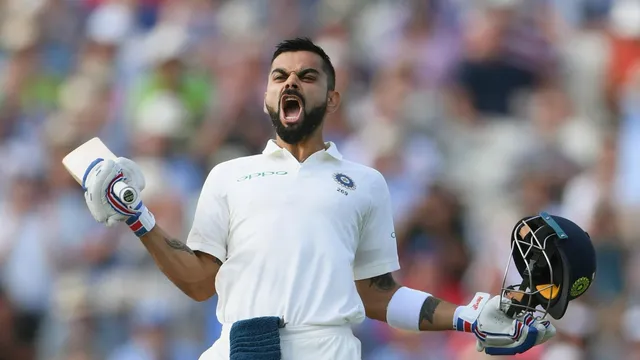Highest First Wicket Partnership In Test

Test cricket, often regarded as the pinnacle of the sport, is a format that tests the skill, patience, and endurance of players over a grueling five-day period. One of the most crucial aspects of building a substantial score in this format is establishing a solid opening partnership. The first wicket partnership sets the tone for the innings, providing a foundation for the middle and lower order to capitalize on. Among these partnerships, some stand out as exceptional displays of skill and synergy between opening batsmen. The highest first wicket partnership in Test cricket is a testament to such excellence and is a record that has stood the test of time.
The Record-Breaking Partnership
The highest first wicket partnership in Test cricket is an extraordinary 415 runs, achieved by South African openers Graeme Smith and Neil McKenzie against Bangladesh in February 2008. This monumental stand took place at the Chittagong Divisional Stadium, now known as the Zahur Ahmed Chowdhury Stadium.
Graeme Smith, the South African captain, and Neil McKenzie exhibited remarkable concentration and resilience, facing 694 deliveries over two days. Their partnership laid a strong foundation for South Africa’s first innings, eventually leading to a commanding total of 583 for 7 declared. Smith’s contribution was a superb 232 runs, while McKenzie added an impressive 226. Their partnership not only broke the previous record but also demoralized the Bangladeshi bowlers, who toiled hard without success for an extended period.
The Significance of the Partnership
This record-breaking partnership is significant for several reasons:
- Historic Achievement: Surpassing the previous highest first wicket partnership of 413 runs set by India’s Vinoo Mankad and Pankaj Roy against New Zealand in 1956, Smith and McKenzie’s effort etched their names in the annals of cricket history.
- Setting the Tone: An opening partnership of this magnitude sets an extraordinary platform for the team, allowing subsequent batsmen to play with freedom and confidence. In this particular match, the massive first wicket stand gave South Africa a dominant position, ultimately leading to an innings victory.
- Test of Endurance and Skill: Batting for such a long period requires immense concentration, physical fitness, and technical proficiency. Smith and McKenzie’s partnership is a classic example of how opening batsmen can negate the new ball threat and build a substantial score through disciplined batting.
- Psychological Impact: A large opening partnership can have a profound psychological impact on the opposition. It can break the morale of the bowlers and fielders, leading to errors and lapses in concentration, which further benefits the batting team.
Context and Legacy
The partnership between Smith and McKenzie came at a time when South Africa was establishing itself as a dominant force in world cricket. Under Smith’s captaincy, the team had shown resilience and the ability to compete against the best. This record added another feather to Smith’s cap as a leader and a batsman.
For Neil McKenzie, this innings was particularly special as it was his maiden double century in Test cricket. His ability to complement Smith and stay focused for such a long period showcased his talent and determination.
Graeme Smith

Graeme Craig Smith, born on February 1, 1981, in Johannesburg, South Africa, is one of cricket’s most distinguished figures. Known for his leadership skills, powerful batting, and tactical acumen, Smith’s contributions to South African cricket have left an indelible mark on the sport.
Early Life and Introduction to Cricket
Graeme Smith’s journey in cricket began at a young age. He attended King Edward VII School in Johannesburg, where his cricketing talent was nurtured. Smith quickly rose through the ranks of youth cricket, demonstrating a natural aptitude for the game. His robust technique and fearless approach made him a standout performer in school and provincial cricket.
Domestic Career
Smith’s domestic career took off when he debuted for Gauteng in the 1999-2000 season. His performances caught the eye of national selectors, leading to his selection for the South Africa A team. His stint with Western Province (later Cape Cobras) further solidified his reputation as a reliable opening batsman. Smith’s consistency in the domestic circuit was instrumental in his rapid rise to international cricket.
International Debut and Early Struggles
Graeme Smith made his Test debut against Australia in March 2002. His initial foray into international cricket was challenging, as he faced formidable bowling attacks and had to adapt to the rigors of the highest level. Despite a slow start, Smith’s resilience and determination were evident. His breakthrough came during South Africa’s tour of England in 2003, where he scored consecutive double centuries, establishing himself as a force to be reckoned with.

Leadership and Captaincy
In 2003, at the age of 22, Smith was appointed as the captain of the South African Test team, becoming the youngest player to hold the position. His appointment was seen as a bold move, but it paid off handsomely. Smith’s aggressive yet astute captaincy rejuvenated the team. Under his leadership, South Africa achieved significant milestones, including a historic Test series win in England in 2008 and a series victory in Australia in 2008-09, the first by a South African team on Australian soil.
Smith’s captaincy was characterized by his ability to inspire his teammates and his strategic brilliance. He led South Africa in 108 Test matches, winning 53 of them, which remains a record for the most wins by a captain in Test cricket. His leadership extended to One Day Internationals (ODIs) as well, where he captained South Africa in 149 matches.
Batting Prowess
As a batsman, Smith was known for his powerful stroke play and mental toughness. He often set the tone for South Africa with commanding performances at the top of the order. Smith’s technique, particularly his ability to handle fast bowling, made him one of the most successful openers in Test history. He scored over 9,000 runs in Test cricket, including 27 centuries. His ODI career was equally impressive, amassing over 6,900 runs with 10 centuries.
Memorable Innings and Achievements
Some of Smith’s most memorable innings include his twin double centuries against England in 2003, his match-winning century against Australia in Perth in 2008, and his heroic effort with a broken hand against Australia in 2009, where he nearly saved the Test match. These performances exemplified his grit and determination.
Smith’s contributions were not limited to his on-field exploits. His leadership helped foster a team culture built on resilience and unity. He played a crucial role in South Africa achieving the No. 1 ranking in Test cricket.
Retirement and Legacy
Graeme Smith retired from international cricket in 2014, leaving behind a legacy of excellence and leadership. Post-retirement, he remained involved in the game through commentary, coaching, and administrative roles. In 2019, he was appointed as South Africa’s Director of Cricket, a testament to his enduring influence on the sport in his country.
Personal Life
Smith’s personal life has also been in the spotlight. He married Irish singer Morgan Deane in 2011, and the couple has two children. Although they divorced in 2015, Smith has continued to maintain a positive public image, focusing on his family and career post-retirement.
Neil McKenzie
Neil McKenzie was born on November 24, 1975, in Johannesburg, South Africa. Raised in a family passionate about cricket, McKenzie’s early introduction to the sport came through his father, Kevin McKenzie, who played first-class cricket for Transvaal. This early exposure laid the foundation for Neil’s cricketing career, shaping his skills and nurturing his love for the game.
Domestic Career
McKenzie’s domestic career began with his debut for Transvaal, now known as the Gauteng cricket team, during the 1994-95 season. His talent was evident from the outset, and he quickly established himself as a reliable batsman. Over the years, McKenzie played for various teams in South Africa, including the Highveld Lions and Titans, demonstrating consistency and a knack for scoring runs in critical situations.
In addition to his domestic commitments in South Africa, McKenzie also had stints in county cricket in England, representing Somerset, Durham, and Hampshire. His adaptability to different conditions and formats was a testament to his versatile batting style.
International Career

Neil McKenzie’s international career began when he made his Test debut for South Africa against Sri Lanka in 2000. His introduction to international cricket was challenging, but McKenzie’s resilience saw him gradually find his footing. Despite facing intermittent selection, he made significant contributions whenever given the opportunity.
One of the highlights of his Test career came in 2008, during South Africa’s tour of Bangladesh. McKenzie, opening the batting with Graeme Smith, scored a monumental 226 runs in Chittagong. This innings was part of a record-breaking 415-run opening partnership with Smith, which remains the highest first-wicket stand in Test cricket history. McKenzie’s ability to perform under pressure was further evident in his twin centuries against England in the same year, which played a crucial role in South Africa’s series win.
In the limited-overs format, McKenzie’s performances were sporadic but impactful. He represented South Africa in One Day Internationals (ODIs) and Twenty20 Internationals (T20Is), contributing with crucial knocks in the middle order. His adaptability across formats highlighted his importance to the South African squad during his tenure.
Style and Technique
Neil McKenzie was known for his unorthodox yet effective batting technique. His stance and approach to the crease were unique, often drawing attention from commentators and fans alike. Despite these peculiarities, McKenzie’s technique was highly effective, particularly in playing long innings. His ability to grind out runs and wear down bowlers made him an asset in Test cricket, where patience and concentration are paramount.
Post-Retirement and Coaching
After retiring from professional cricket, McKenzie transitioned into coaching, bringing his wealth of experience to the next generation of cricketers. He has worked with various teams, including serving as the batting consultant for the South African national team. His coaching philosophy emphasizes mental toughness and the importance of adaptability, principles that defined his playing career.
Legacy and Impact
Neil McKenzie’s cricketing journey is a story of perseverance, resilience, and adaptability. His career, marked by significant highs and challenging lows, serves as an inspiration for aspiring cricketers. The record-breaking partnership with Graeme Smith remains a highlight of his career, symbolizing his ability to rise to the occasion and deliver under pressure.
McKenzie’s contributions to South African cricket extend beyond his runs and records. His unique approach to the game, both as a player and a coach, has left an indelible mark on the cricketing landscape. As he continues to influence the sport through coaching, his legacy as a dedicated and innovative cricketer endures.
Conclusion
The highest first wicket partnership in Test cricket, set by Graeme Smith and Neil McKenzie, is a remarkable feat that highlights the importance of a strong opening stand. Their achievement not only set a record but also demonstrated the virtues of patience, skill, and perseverance. Such partnerships are rare and precious, embodying the essence of Test cricket’s unique challenges and rewards. As the game evolves, records like these remind us of the enduring appeal of Test cricket and the extraordinary feats that can be achieved through dedication and teamwork.
FAQs





